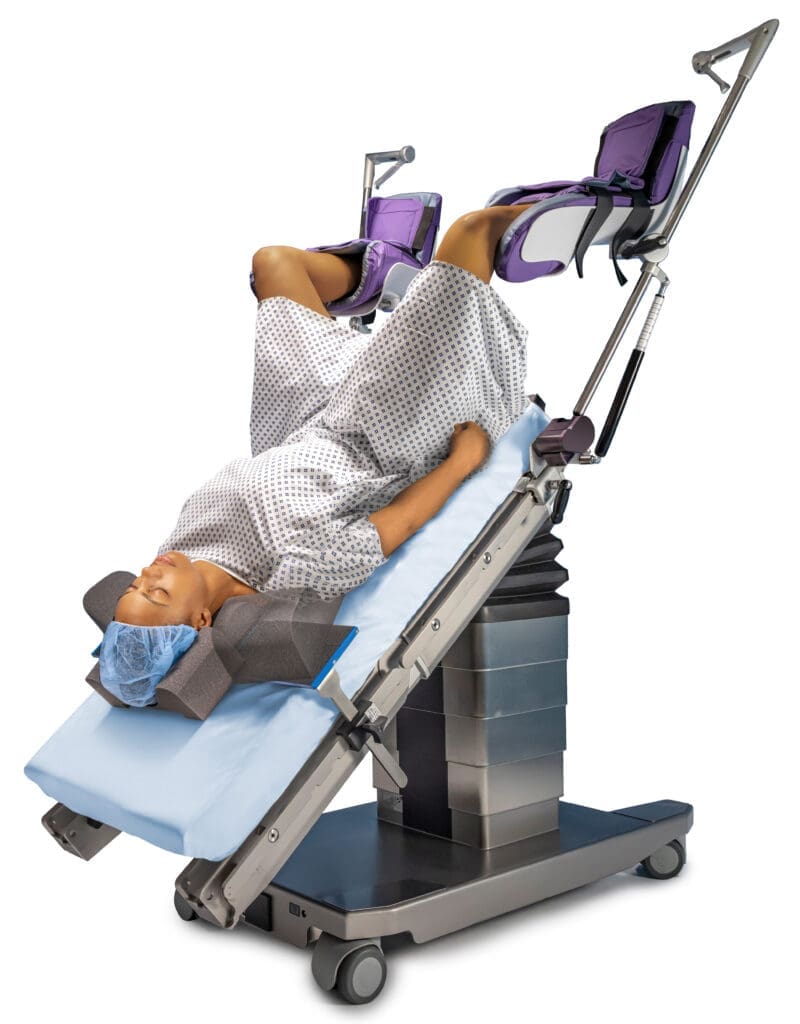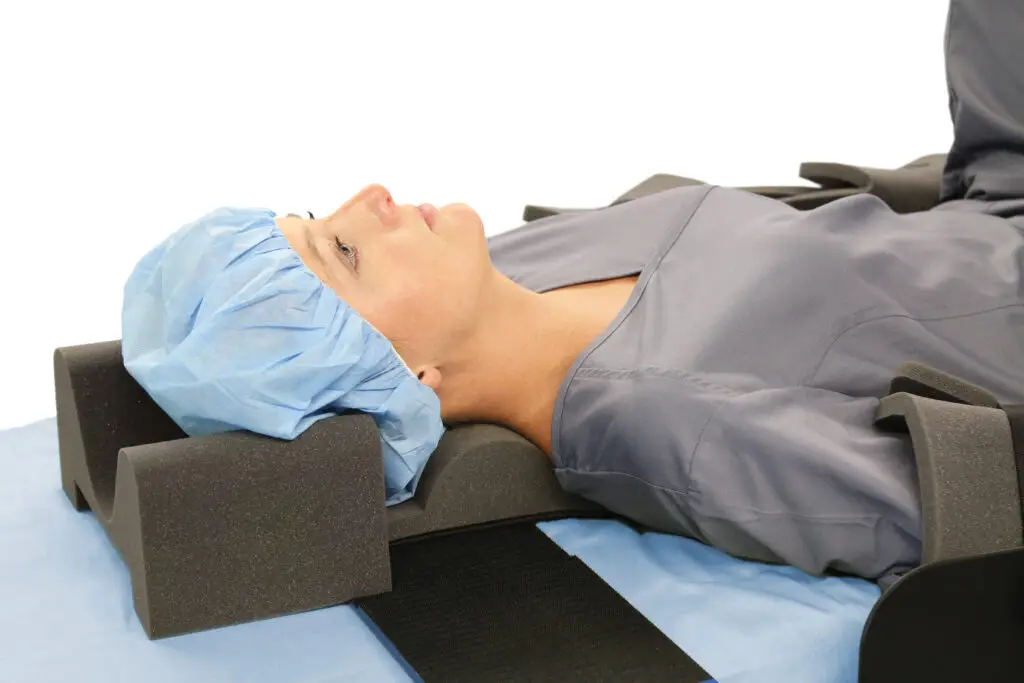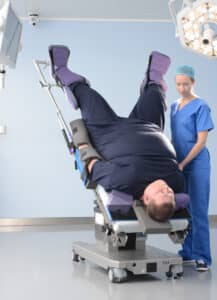Preventing Patient Sliding in Steep Trendelenburg
This study covering 503 patients shows a perfect “No-Slide”
safety record for TrenGuard™ Trendelenburg Positioner
Evidence-Based Nursing Practice and Research Poster Presentation from OR Manager Conference 2016
The use of a safe no-slide patient restraint is important when creating a safe environment for patients placed in the Trendelenburg position.
A 2016 University of Michigan Health System, evidence-based nursing practice poster describes their experience using a “No-Slide” Trendelenburg patient positioning technology. During a 10-month period, 503 laparoscopic and robotic GYN procedures were performed on patients of all sizes utilizing foam bolster. None of the patients slid and there were no injuries.

In summary:
“Patients supported by body contours that engage a large muscle mass, such as the trapezius muscle, can be prevented from sliding on the OR bed while in steep Trendelenburg, even up to a 30-40-degree angle. This security allows patients to avoid injuries to skin, joints and nerves that are associated with sliding.”
The poster was introduced by Jan Barber BSN, RN Gynecology/Urology Service Educator for the University of Michigan Health Services at the 29th Annual O.R. Manager Conference in September of 2016.
The presentation refers specifically to the author’s experience with the technology behind the TrenGuard Trendelenburg Positioner.
The rigid patient support frame is fixed to the table rail with clamps. The patented patient support bolster (which resembles a ”speed bump”) is fixed to the frame with industrial hook/loop fastener. The assembly is then positioned in the patient’s cervical notch and against a large muscle mass so that when the patient is placed in Trendelenburg, the bolster engages with the trapezius muscle and the patient cannot move or slide. A “U” shaped pillow stabilizes the head. A pair of non-load-bearing lateral stabilizing pillows effectively control body mass shift during the transition between supine and Trendelenburg.


Barber J. Preventing patient sliding in steep Trendelenburg. Poster presented at: OR Manager™ Conference, September 21-23, 2016, Las Vegas, NV.
Poster full text
PREVENTING PATIENT SLIDING IN STEEP TRENDELENBURG
GOALS: To prevent patients who are positioned in steep Trendelenburg from sliding on the OR bed and avoiding any related injuries.
Introduction
The University of Michigan Health System has a large Obstetrics and Gynecology Department that provides a wide range of services to our patients. These include robotic and laparoscopic surgeries that require the patient to be placed in a steep Trendelenburg position. We have used eggcrate foam, gel pads, shoulder braces and bean bags as positioning devices to prevent sliding on the OR bed and potential injury. In spite of these [being] used separately and sometimes in combination, we still experienced cephalad movement of some patients. One patient had extensive movement of approximately 30 cm.
Traditional Methods
In a study done by Klauschie and Wechter, they had laparoscopic and robotic patients positioned in steep Trendelenburg. Thirty-one patients were positioned with eggcrate foam and 29 patients positioned with gel pads. The eggcrate patients had a mean slide distance of 3.3 cm and the gel pad patients had a mean slide distance of 3.6 cm.
These traditional methods do not prevent patient sliding.
Speed Bump Method
- Frame is attached to OR bed rails.
- Speed bump placed in concave of patient’s neck, against the trapezius
- Orientation of foam pieces to frame.
The speed bump method has a frame covered with Velcro that is secured to the rails on the OR bed. The patient is positioned with four pieces of foam that attach to the frame. One of the pieces of foam has a raised half roll section that resembles a speed bump. This is placed in the contour of the patient’s neck, bumping up against the trapezius muscle.
Another piece of foam is placed under the patient’s head to stabilize side to side movement. The last two pieces of foam are placed lightly next to each shoulder at a 45 degree angle. These function not as shoulder braces but as lateral stabilizers.
Results
During a ten month period of time 503 laparoscopic and robotic gynecological cases were performed. All of these patients were placed in low lithotomy with their arms secured at their sides and the Velcro covered frame with speed bump foam positioning system was used. These patients were inclined in steep Trendelenburg at a 30-40 degree angle. No patient slid on the OR bed and there have been no skin shearing or brachial plexus injuries.
Conclusion
Patients supported by body contours that engage a large muscle mass such as the trapezius muscle can be prevented from sliding on the OR bed while in steep Trendelenburg, even up to a 30-40 degree angle. This security allows patients to avoid injuries to skin, joints and nerves that are associated with siding.
The University of Michigan Health System (UMHS) based in Ann Arbor Michigan, is an academic medical center. The 76 operating rooms across the medical center campus are located at: University Hospital, Frankel Cardiovascular Center, C.S. Mott Children’s Hospital & Von Voigtlander Women’s Hospital, Kellogg Eye Center, East Ann Arbor Ambulatory Surgery Center, Livonia Surgery Center. References: Klauschie J, Wechter ME, Jacob K, Zanagnolo V, Montero R, Magrina J, Kho R. (2010) Use of anti-skid material and patient-positioning to prevent shifting during robotic assisted gynecologic procedures. Journal of Minimally Invasive Gynecology, Jul-Aug 17(4):504-7
